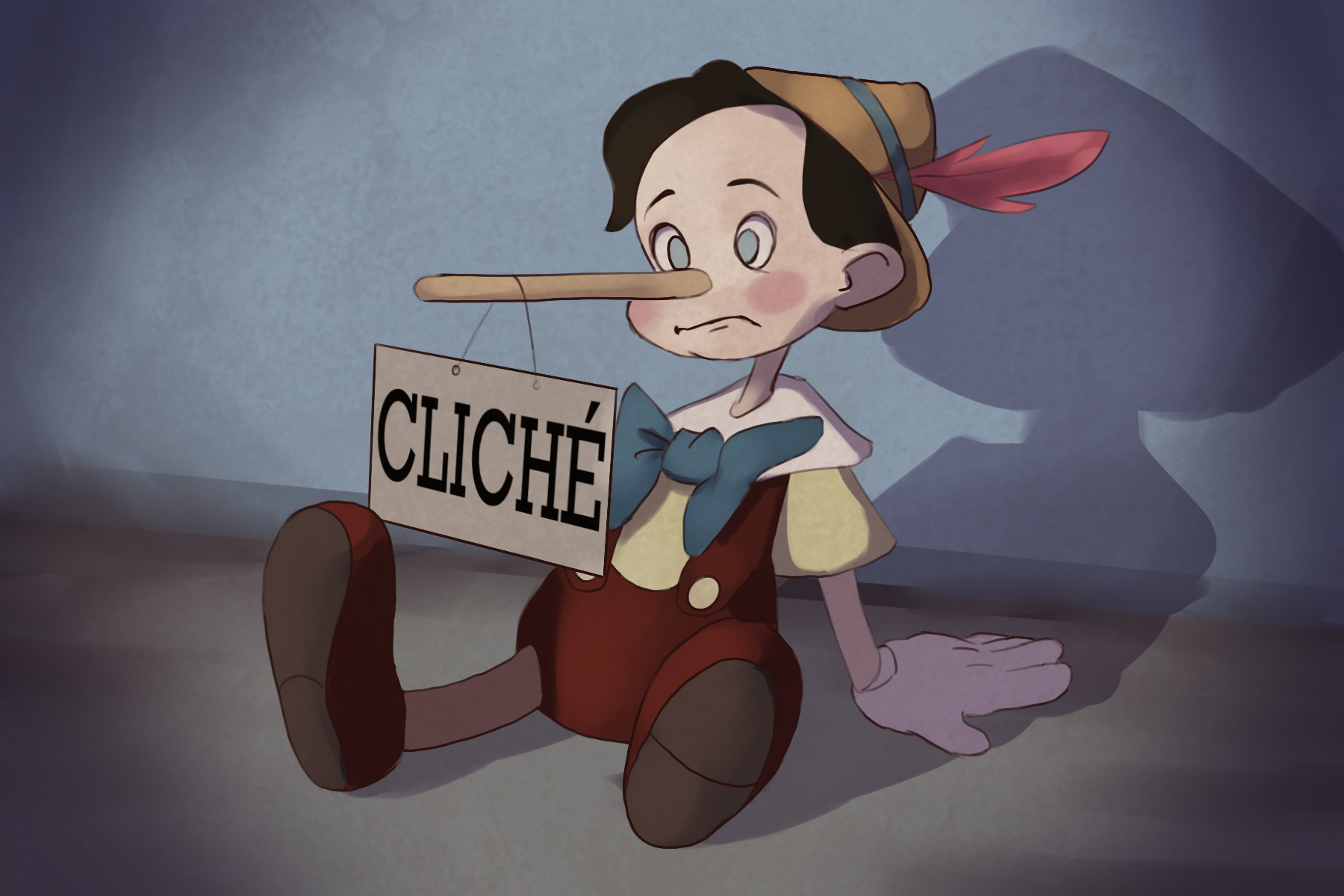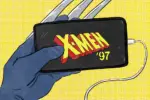In the past decade, Disney has remade as many classic films as possible, with dozens of remakes being released within the past several years. You would think the remakes would only get better year after year, with modern CGI making almost anything possible for the big screen. Unfortunately, impressive visuals can only do so much without good writing, which is something the more recent movies seem to lack.
The newest addition to this list is the 2022 “Pinocchio,” and the film fits the trend all too well. “Pinocchio” received a jarring 27% critics rating and 32% audience rating on Rotten Tomatoes, with one critic calling the movie “soulless” and another describing it as “frustratingly dry.” So, why all the negative feedback? What did the movie do wrong? The best way to put it: The movie manages to rehash the same classic story while stripping it of all its charm and importance.
Pinocchio’s character is probably the biggest change made in the 2022 movie. In the original 1940s “Pinocchio,” he is wild, impulsive, easily manipulated and has no moral compass, which makes sense because he was born only the day before. Why would he be moral if he is, quite literally, an infant?
This childish ignorance gets him in a lot of trouble. He follows a sly fox by the name of Honest John who tricks him into joining a traveling marionette show in which he is exploited for money. He is then convinced to go to a place called Pleasure Isle, where kids are taken to drink, smoke, destroy stuff and eventually get turned into donkeys. Pinocchio does all of this willingly, acting on nothing but impulse.
Pinocchio does receive some punishment. He is thrown in cages, has a nose that grows when he lies and is turned into a donkey at Pleasure Isle. However, at the end of the movie, Pinocchio redeems himself by sacrificing himself for Geppetto, and he is rewarded for his selflessness and bravery by being turned into a real, human boy. This Pinocchio is relatable: He needs parental guidance and represents all the impulsiveness a young child would possess. However, he learns his lesson, therefore teaching children that impulsivity is never the right move and that it is never too late to do the right thing.
Now onto the new “Pinocchio.” In the remake, Pinocchio is not impulsive but rather does exactly what he is told and cringes at anything that might make his father upset. He has good morals, which is not what we want to see in Pinocchio. The new movie does seem to follow Pinocchio’s adventures from the original pretty closely.
However, the remake manages to make Pinocchio the victim in every situation he finds himself in, which was not the case in the original. Pinocchio chooses to follow Honest John, but only because he was rejected from school for being a puppet and wants to make his father proud by becoming famous. This is an understandable reason to run off to the marionette show, but it paints him as a victim and not a willing participant.
The same can be said for the Pleasure Isle portion of the movie. To preface, this version of Pleasure Isle has been stripped of its “controversial” elements. Beer has been replaced by root beer, cigars have been replaced with an abundance of candy and the children destroy things on a much smaller scale than before. This new, safer Pleasure Isle already minimizes its rebellious appeal. However, it is Pinocchio’s response to Pleasure Isle that really diminishes the importance of this portion of the movie.
During his time on Pleasure Isle, Pinocchio is disgusted by everything he sees. He doesn’t partake in any of the activities; in fact, he openly rejects it when he tells one of the children on the island, “I don’t want to be a jerk. I want to be a real boy.” Pinocchio’s goody-goody nature also lessens the impact of his punishments, as they just come across as unwarranted and paint Pinocchio as nothing more than a victim. It seems that this version of Pinocchio has already learned the lesson that the original Pinocchio learned at the end of his movie, which begs the question: “Why is any of this relevant?”
Some of the other classic characters in the new movie have also been scrubbed of their original personality. Jiminy Cricket, for example, is very different. In the original movie, Jiminy Cricket is a snarky and impatient character, but he grows with Pinocchio, serving as his conscience and learning the importance of patience. In the new movie, Jiminy Cricket is much nicer and much more patient. He is a wholly positive character and cracks corny jokes, and he doubles as the movie’s narrator while serving as Pinocchio’s conscience. This version of Jiminy Cricket is bland, and he is almost completely unnecessary. Why does Pinocchio need a conscience if he already has a decent understanding of right and wrong? It’s pointless.
Another victim of this character scrubbing is the Blue Fairy. The Blue Fairy in the original movie acts as Pinocchio’s motherly figure. She grants him life, instructs him on his mission and shows up to offer help whenever it is needed. She also plays a vital role in Pinocchio’s most memorable trait — his enchanted nose. When the Blue Fairy comes to check in on Pinocchio, she finds him in a cage. To cover up his mistakes, Pinocchio spins a wild tale in which he is the victim, but every time he tells a lie, his nose grows longer thanks to the Blue Fairy’s magic.
The scene is a powerful moment for Pinocchio’s character, making the Blue Fairy’s presence even more important. However, in the new movie, the Blue Fairy shows up once. She grants Pinocchio life, tells him how to become a real boy and then is never seen again. Her absence rips the tension and weight out of every scene in which she was supposed to appear. Even at the end, the Fairy does not turn Pinocchio into a real boy like in the original. Instead, Pinocchio walks off into the distance while Jiminy Cricket states that he was a real boy all along.
Such misrepresentations of vital characters also change the overall theme of the film. In the original, Pinocchio makes very bad and reckless decisions, but he eventually learns that true humanity requires bravery, truthfulness and selflessness, and he is rewarded by being turned into a real boy.
However, the new movie flips this narrative and turns it into something we’ve seen time and time again. He is the victim. He is a good person who has bad things happen to him because he is different from the rest, and in the end, we find out that he was always a real boy in his heart. We never even see him turn into a real boy, which is the end goal in almost every Pinocchio adaptation.
The theme that one needs to accept others’ differences is something that has been used over and over in children’s movies, even by Disney itself. Movies like “Turning Red,” “Luca,” “Frozen,” “Encanto,” “Zombies” and “Descendants” have all used the same concept, and it works so well. So, why did they need to use it in “Pinocchio”? To clarify, there is nothing wrong with promoting a theme of acceptance and kindness, as these are very important topics to include in children’s movies. However, not every movie needs to follow this format, especially when remaking a classic. At the end of the day, the 2022 “Pinocchio” is hardly the same movie as the original.
The 2022 adaptation of “Pinocchio” does what most live-action Disney remakes have done — strip the story of all its charm and cover it with impressive CGI. The movie makes unnecessary changes to the characters and themes all for the sake of making more money. These changes may not seem very impactful on the surface. After all, are writers not allowed to take some creative liberties when rebooting a classic?
Creative liberties are completely fine. Straying a little bit from the original storyline to explore unique themes and perspectives can add some flavor to an otherwise predictable story. It’s only when the story becomes unrecognizable that it starts to become a problem, especially when the movie is almost a shot-for-shot remake of the original. At the end of the day, the 2022 “Pinocchio” simply fails to live up to its classic predecessor.

















